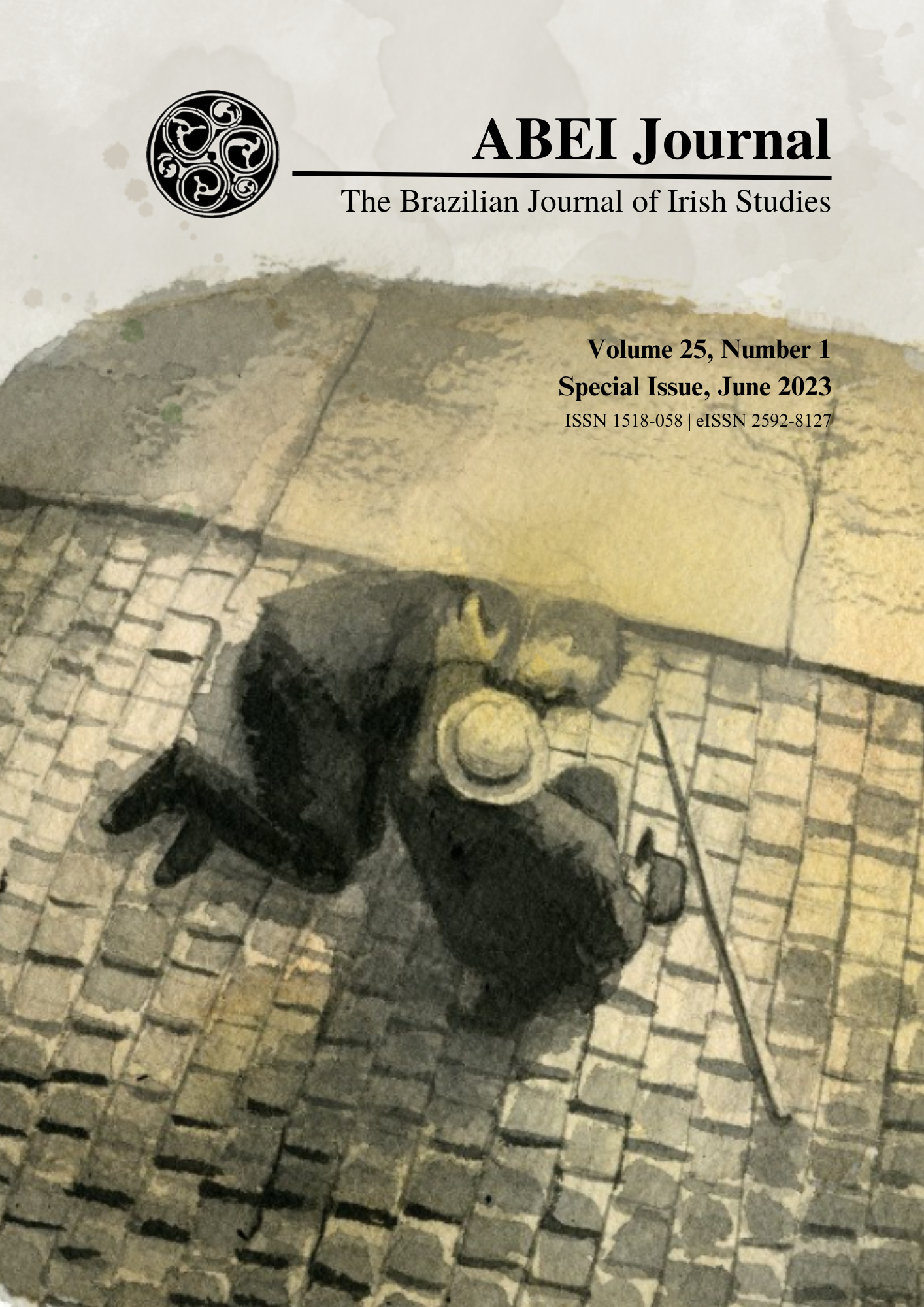Who’s Afraid of Reading Joyce’s Ulysses: Unravelling the Joycean Labyrinth in “Eumaeus”
DOI:
https://doi.org/10.11606/issn.2595-8127.v25i1p57-67Keywords:
Ulysses, James Joyce, Reading, L’Analyse de ContenuAbstract
Reading Ulysses, James Joyce’s novel which was first published in 1922, may not be an easy task. In the text, Joyce does not apply his narrative to traditional, chronological, structures. Instead, the reader is challenged to dive into the stream of consciousness of its main character, Leopold Bloom. This means reading through disconnections, fragmented thoughts, Bloom’s distractions, the synesthetic elements within the narrative, and encountering a language that is full of neologisms, allusions, agglutinations, polyphonies, among other characteristics. However, such a challenge often represents a barrier to many who may feel lost or overwhelmed by that reading. For the centenary of the publication of Ulysses, this essay aims at unravelling the Joycean labyrinth through the sixteenth episode of the novel, “Eumaeus”. Following the technique of the content analysis, defined by Lauren Bardin in L’Analyse de Contenu, it is possible to present an overview of the chapter. The description and interpretation of the key aspects of the chapter will guide the readers’ navigation through the literary virtuosities, allusions, and puzzles of the book.
References
Bardin, Laurence. L’Analyse de Contenu. PUF / Quadrige Manuels Edition, 2007.
Joyce, James. Ulysses. Translated by Caetano W. Galindo, Penguin / Companhia das Letras, 2012.
Mitchell, Jane. Run For Your Life. Little Island, 2022.
Wilde, Oscar. “The Critic as Artist.” Norton Anthology of Theory and Criticism, edited by Vincent Leitch, Norton, 2001, pp. 900-912.
Downloads
Published
Issue
Section
License
Copyright (c) 2023 Lara Rebeca da Mata Santa Barbara, Noélia Borges de Araújo

This work is licensed under a Creative Commons Attribution-NonCommercial 4.0 International License.


